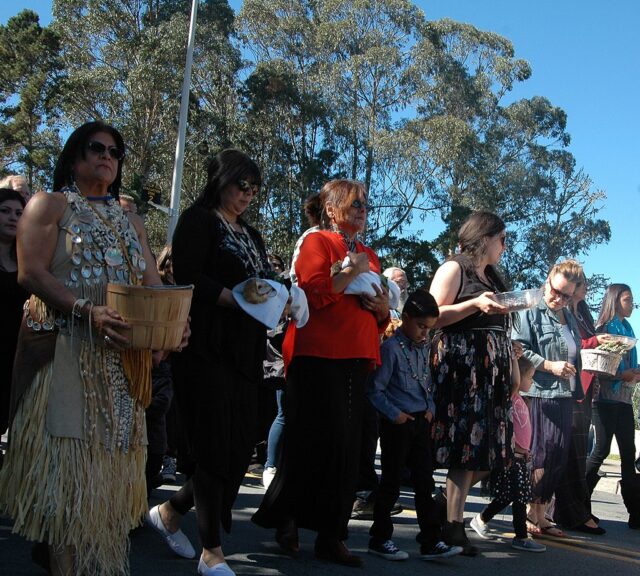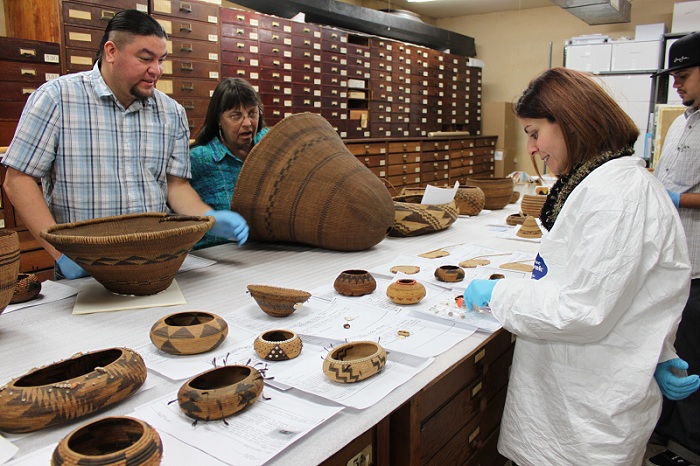
Echoes of Return: The Unfolding Saga of Native American Repatriation
For centuries, the ancestral lands of Native American tribes were plundered, their people displaced, and their cultures systematically dismantled. But beyond the physical territories, another profound violation occurred: the desecration and theft of their most sacred possessions and, most grievously, the remains of their ancestors. Today, a monumental and long-overdue process of reconciliation is underway, one that seeks to mend the wounds of history by returning these invaluable cultural and human treasures. Native American tribal repatriation is not merely about returning objects or bones; it is a profound act of restorative justice, cultural revitalization, and spiritual healing that reverberates through generations.
The scale of the historical injustice is staggering. It is estimated that museums, universities, and federal agencies across the United States alone hold the remains of well over 100,000 Native American individuals, with some estimates ranging as high as 2 million when including private collections and smaller institutions. Alongside these remains are countless funerary objects, sacred artifacts, and items of cultural patrimony, often acquired through grave robbing, unethical archaeological digs, or outright theft during periods of violent conquest and forced assimilation. These collections, once proudly displayed as trophies of a "vanishing race" or invaluable scientific specimens, represent the stolen heritage and dignity of vibrant, enduring cultures.
The Legal Backbone: NAGPRA’s Imperative
The turning point for repatriation efforts in the United States arrived with the passage of the Native American Graves Protection and Repatriation Act (NAGPRA) in 1990. This landmark federal law marked a watershed moment, acknowledging the inherent rights of Indigenous peoples to their cultural heritage. NAGPRA mandates that federal agencies and museums that receive federal funding inventory their collections and, upon request, return Native American human remains, funerary objects, sacred objects, and objects of cultural patrimony to lineal descendants or culturally affiliated Native American tribes.
Before NAGPRA, institutions often argued for the "scientific value" of these collections, framing Indigenous ancestors as subjects for study rather than as human beings deserving of respectful burial. The Act fundamentally shifted this paradigm, prioritizing human rights and cultural respect over scientific curiosity. "NAGPRA forced a reckoning," explains Shannon Keller O’Loughlin, a citizen of the Choctaw Nation of Oklahoma and Executive Director of the Association on American Indian Affairs. "It said, ‘These are people, not specimens. Their descendants have rights.’"

Despite its monumental importance, NAGPRA’s implementation has been a complex and often slow process. Many institutions initially resisted, citing logistical challenges, lack of clear affiliation, or the perceived loss of valuable collections. More than three decades later, while significant progress has been made, thousands of ancestors and hundreds of thousands of objects remain in institutional care. According to a 2022 National NAGPRA Program report, over 120,000 ancestral remains are still held by institutions and federal agencies, awaiting repatriation. This stark figure underscores the immense work that remains.
Beyond the Bones: The Living Significance of Repatriation
The return of ancestral remains carries profound spiritual weight. For many Native American tribes, the proper burial of their ancestors is essential for the spiritual well-being of both the deceased and the living community. Unburied or disturbed remains are believed to prevent ancestors from completing their journey to the spirit world, causing spiritual unrest for their descendants. The case of "Kennewick Man," or the Ancient One, exemplifies this struggle. Discovered in 1996, his 9,000-year-old remains became the subject of a two-decade legal battle between scientists advocating for study and a coalition of Columbia Plateau tribes asserting cultural affiliation. The tribes eventually prevailed, and the Ancient One was finally reburied in 2017, a testament to the enduring fight for ancestral dignity.
Sacred objects and objects of cultural patrimony are equally vital. These are not mere museum pieces; they are often imbued with spiritual power, used in ceremonies, or serve as essential components of tribal governance and cultural continuity. Their absence creates a void in tribal life, hindering the practice of traditional ceremonies, the transmission of knowledge to younger generations, and the full expression of cultural identity. The Hopi Tribe, for instance, has long sought the return of Katsina friends (often mistakenly called "dolls") that are sacred effigies central to their spiritual practices. When these objects are returned, it’s not just an artifact coming home; it’s a living part of their culture returning to its rightful place.
Challenges and Obstacles: The Unfinished Journey
While NAGPRA provides a legal framework, the path to repatriation is fraught with challenges.
- Identification and Affiliation: Establishing cultural affiliation between ancient remains or objects and contemporary tribes can be difficult, especially for very old collections or those with incomplete provenance records. Scientists sometimes demand DNA evidence, which many tribes view as a further violation of their ancestors’ dignity.
- Institutional Resistance and Bureaucracy: Some museums and universities, despite federal mandates, have been slow to comply, sometimes actively creating legal or administrative hurdles. The process of inventorying, consulting, and preparing for repatriation is resource-intensive, and many institutions lack dedicated staff or funding.
- The "Scientific Value" Argument: While less prevalent than in the past, some archaeologists and anthropologists still argue for the retention of certain collections for study, often clashing with tribal sovereignty and spiritual beliefs.
- Funding and Resources: Repatriation is not just about the return; it involves the costs of transportation, reburial ceremonies, and sometimes the construction of appropriate facilities for reinterment or rehousing of objects. Many tribes, particularly those with limited resources, struggle to meet these financial burdens.
- Private Collections: NAGPRA only applies to federal agencies and institutions receiving federal funding. Vast numbers of Native American remains and sacred objects remain in private hands, outside the scope of the law, posing a significant ethical dilemma and a major barrier to complete repatriation. This "dark market" continues to fuel the illicit trade of cultural heritage.

The Transformative Power of Return
Despite the obstacles, the impact of successful repatriations is transformative.
- Healing and Reconciliation: For tribes, the return of ancestors and sacred items brings a profound sense of healing, closure, and restoration of dignity. It acknowledges past wrongs and begins to repair the historical trauma inflicted. "Every ancestor returned is a step towards healing for our entire community," says a Pawnee tribal elder whose ancestors were returned from the Smithsonian. "It’s about bringing peace to those who never found it."
- Cultural Revitalization: Repatriation often sparks a resurgence of traditional ceremonies, languages, and cultural practices. The presence of sacred objects re-energizes traditional knowledge keepers and inspires younger generations to learn and perpetuate their heritage.
- Assertion of Sovereignty: The act of demanding and receiving repatriated items is a powerful assertion of tribal sovereignty and self-determination. It reaffirms tribes’ inherent right to govern their own cultural heritage and narratives.
- Education and Awareness: The repatriation process itself serves as a vital educational tool, raising public awareness about Native American history, cultures, and ongoing struggles for justice. It forces institutions and the public to confront uncomfortable truths about colonialism and its legacy. Museums that once displayed these items now often become partners in their return, shifting their role from custodians of stolen heritage to collaborators in cultural preservation. The Smithsonian’s National Museum of the American Indian, for example, has been a leading institution in repatriation efforts, demonstrating a commitment to ethical stewardship and tribal consultation.
Looking Forward: An Ongoing Moral Imperative
The journey of Native American tribal repatriation is far from over. As institutions continue to inventory their holdings and tribes persist in their advocacy, the focus is increasingly broadening. There’s a growing international movement, supported by the United Nations Declaration on the Rights of Indigenous Peoples (UNDRIP), which affirms Indigenous peoples’ right to "maintain, protect, and develop the past, present, and future manifestations of their cultures, such as archaeological and historical sites, artifacts, designs, ceremonies, technologies and visual and performing arts and literature."
The ethical imperative now extends beyond the letter of NAGPRA to include private collectors and international institutions holding Native American cultural heritage. The moral argument is clear: these are not mere historical curiosities; they are deeply personal, culturally vital, and spiritually significant components of living Indigenous communities.
Native American tribal repatriation represents a critical chapter in the ongoing narrative of justice and reconciliation. It is a testament to the resilience of Indigenous cultures and a powerful reminder that true respect involves not just acknowledging history, but actively working to heal its wounds. The return of every ancestor, every sacred object, is an echo of return that reverberates across time, helping to restore balance, dignity, and a profound sense of belonging to the rightful stewards of America’s oldest cultures.